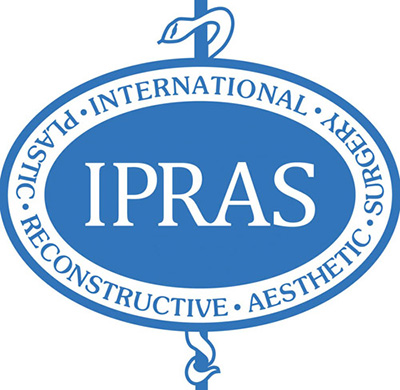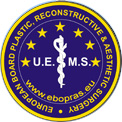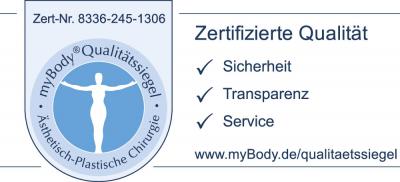Lipedema treatment in Düsseldorf
Have you ever wondered why...
Information about lipedema treatment
- Treatment duration: 1 - 3 hours
- Anesthesia: local or general anesthesia
- Hospital stay: outpatient or 1 overnight stay
- Downtime: approx. 3 - 7 days
- Price: from € 4,000 - (plus anaesthetic costs)
... your legs feel like they are getting thicker and thicker despite exercise and a healthy diet?
... your upper body is normally proportioned, but in comparison your buttocks and legs seem to belong to another, much more corpulent person?
... your legs are extremely sensitive to pressure and pain even though there is nothing physically exerting them?
... a slight impact on the skin of your legs or arms causes you to bruise and hurt, sometimes without even remembering what you might have bumped into?
... you sometimes feel as if your arms and legs are made of lead without any special effort on your part?
If you suffer from one or more of these symptoms, you should consult a phlebologist, a lymphologist or a vascular specialist to find out whether you might be suffering from lipedema.
Make an appointment online now
Do you have any questions about lipedema treatment or would you like to make an appointment online? Please contact us.
Important questions and answers
1. What causes lipedema?
Lipedema is a fat distribution disorder that only affects women and, unfortunately, is still not recognized by many doctors. It manifests itself predominantly in the extremities (arms and legs), often resulting in a collar-like thickening of the ankles and wrists. The hands and feet are not affected. As the disorder progresses, the tissue grows and hardens with chronic changes. The disorder is associated with pain and a tendency to hematoma, in addition to movement restrictions.
This clinical picture is divided into 3 stages:
- Stage 1: fine-boned skin surface
- Stage 2: coarse, knotty skin surface with strong dents
- Stage 3: hardened, deformed tissue and pronounced fat bulges
2. What does this mean for the patients who are affected?
The disorder represents a great physical and psychological burden for those affected. In addition to the physical suffering, patients often have feelings of guilt and shame, which are in many cases caused by their immediate surroundings. Contemptuous looks, nasty remarks and a general lack of understanding are everyday issues. People assume that someone can only become so obese because of excessive eating. A possible illness is never thought of.
The lipedema disorder often begins with the onset of puberty. Hormonal triggers (puberty, pregnancy, menopause) are often associated with the disorder. Lipedema cannot be treated with medication, nor is it curable. Diets or sports activities also have no influence on lipedema. If adiposity also exists, this should try to be reduced, if possible.
3. What are the treatment options for lipedema?
There are conservative treatment options that can help alleviate the symptoms. These include compression and lymphatic drainage, but they must be continued over a lifetime. However, this will not stop or even cure the lipedema permanently.
For many patients, medical liposuction of the affected tissue is a beneficial treatment. Medically indicated liposuction, or liposuction for lipedema, is a procedure to remove excess pathological body fat that cannot be influenced by weight reduction.
The fat removed by the operation is permanently gone and will not come back to the operated areas. For many patients, this procedure can quickly relieve symptoms, especially if the abnormal fat is removed at an early stage to prevent chronic changes.
Further FAQ
How does the surgical treatment work?
Lipedema liposuction is performed by our plastic and aesthetic surgeons using the WAL technique (water jet assisted liposuction) or the PAL technique (power assisted liposuction), aka vibration assisted liposuction. Both procedures are extremely tissue-friendly and effective. The excess and pathological body fat is loosened from the surrounding tissue by the water jet, or with vibration, then removed with special protection of the lymph vessels.
The treatment is usually carried out under general anaesthesia and includes an overnight stay in our clinic. The amount of pathological fat tissue removed depends on the respective circumstances; volumes of five to seven litres per operation are not uncommon in the legs.
What is the additional treatment for lipedema?
After the operation, a specially made compression garment is worn to relieve painful swelling of the operated tissue and support rapid healing. This must be worn consistently for at least six weeks. Lymph drainage should be started as early as possible after the operation to ensure that the tissue is drained and healing has improved. Consistent skin care should be applied regularly. We will be happy to advise you on suitable products that will help your skin to strengthen itself.
Patients often report relief or even liberation from symptoms of the suctioned areas shortly after an operation. Typically, several surgical sessions are necessary until the patient is mostly pain-free and the affected tissue is almost completely removed. However, complete freedom from symptoms cannot be guaranteed.
We recommend a healing period of at least three months between the operations. In a single operation, the removal of up to six or seven litres of fatty tissue may require longer convalescence phases until the patient feels "fit" again for the next operation. Due to the severe loss of volume, excess skin areas may remain, which must then be specifically removed through a tightening operation so that a normal body shape is created. We will be happy to advise you on this if requested.
We recommend our patients to take special measures after the operation to support the final result. These include:
- A healthy and balanced diet
- Regular lymph drainage and wearing of compression garments
- Targeted sports activities
- Close monitoring by our medical specialists
What are the prerequisites for an operation?
Affected patients should have undergone conservative treatment (compression, lymph drainage) for at least six months prior to the operation. If these treatments were not effective, there is the possibility of suctioning the affected tissue.
Cost coverage by the health insurance company is possible in individual cases and must be applied for in advance from the respective insurance company.












